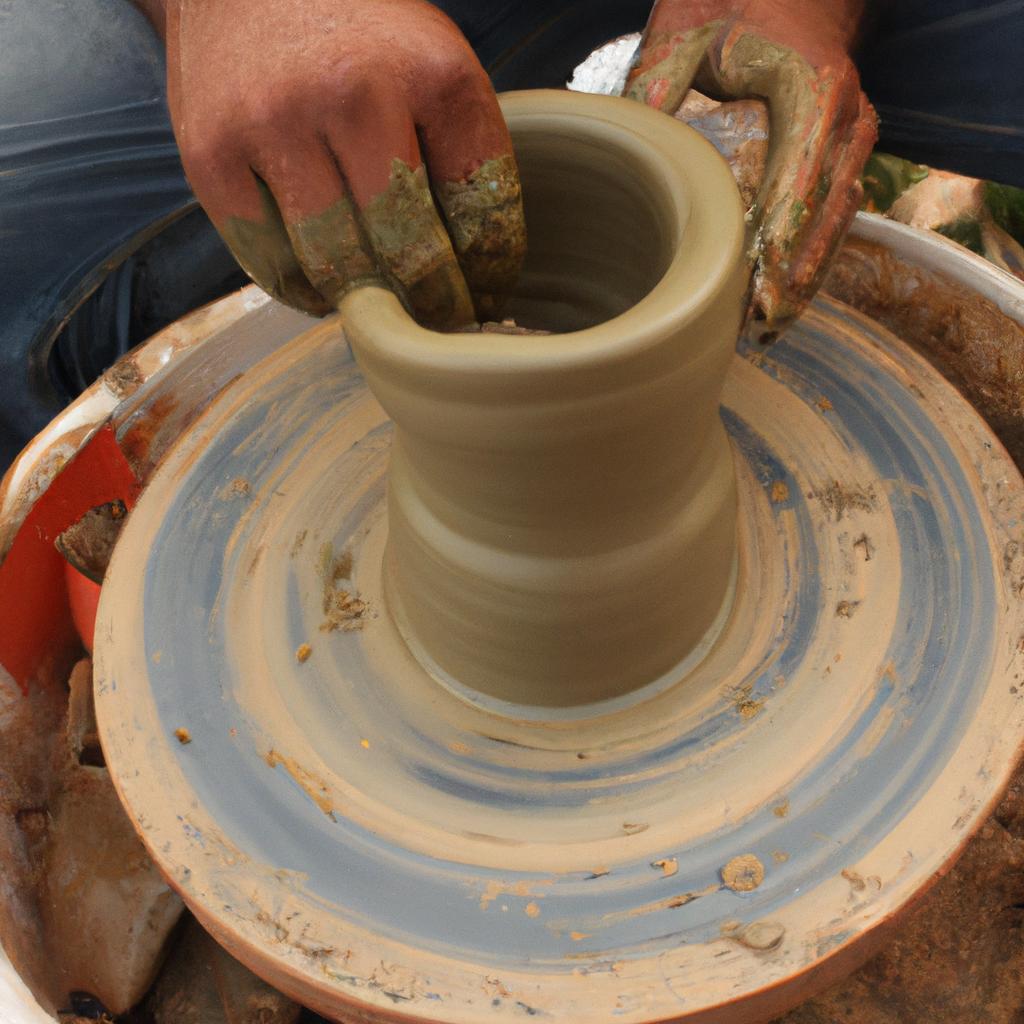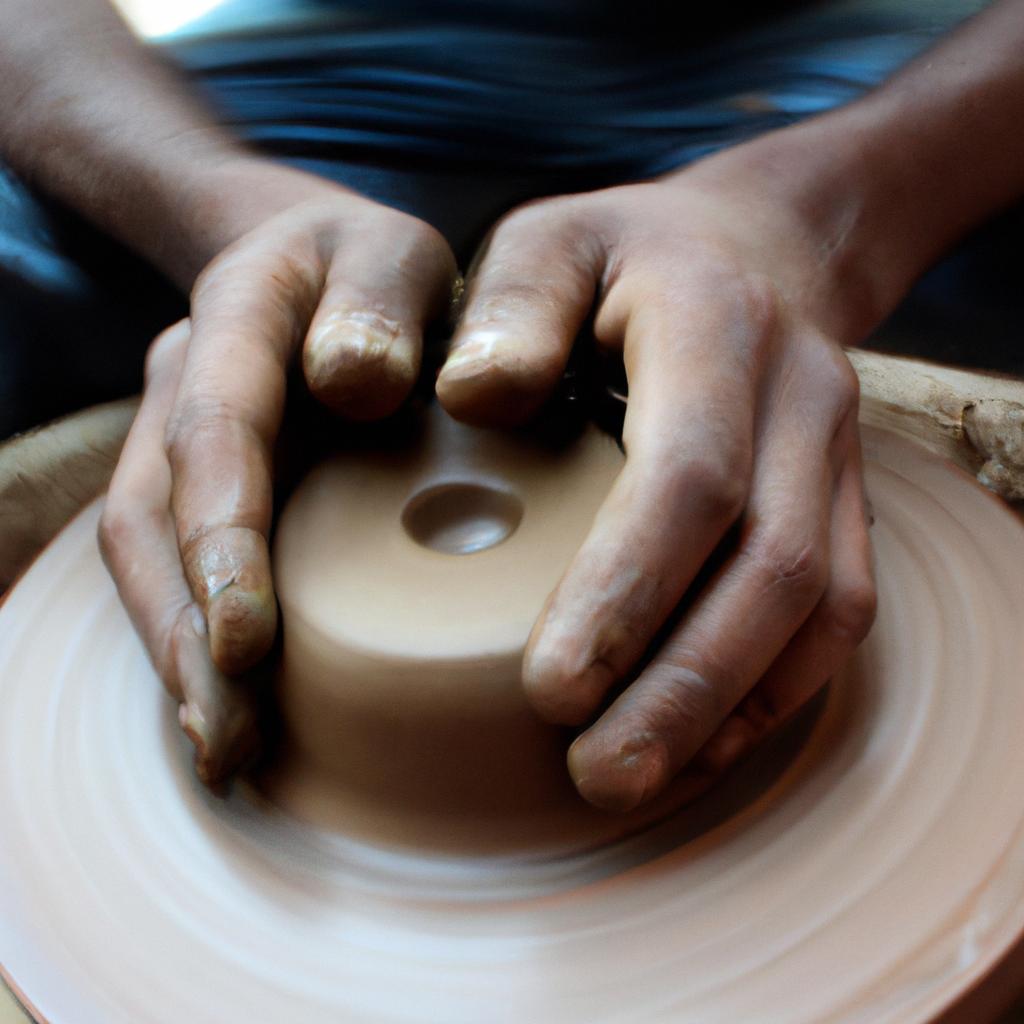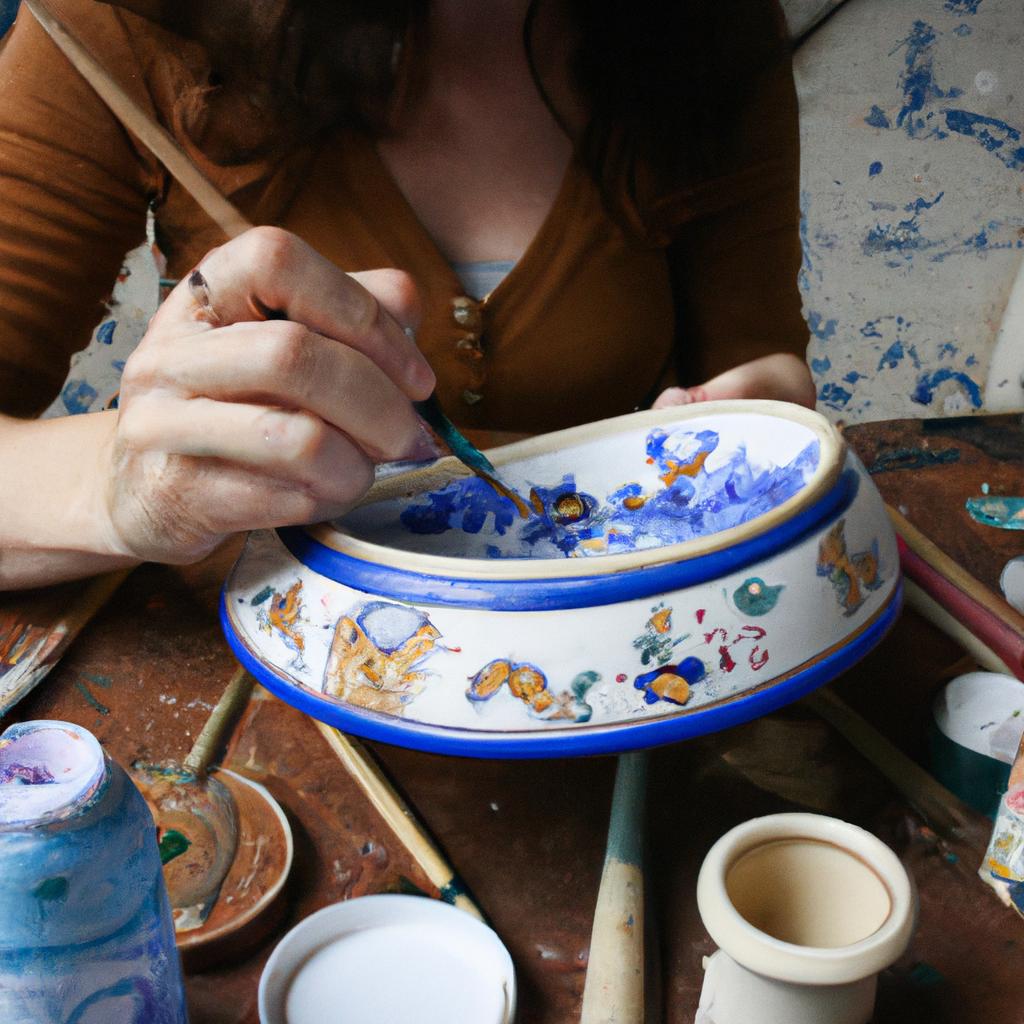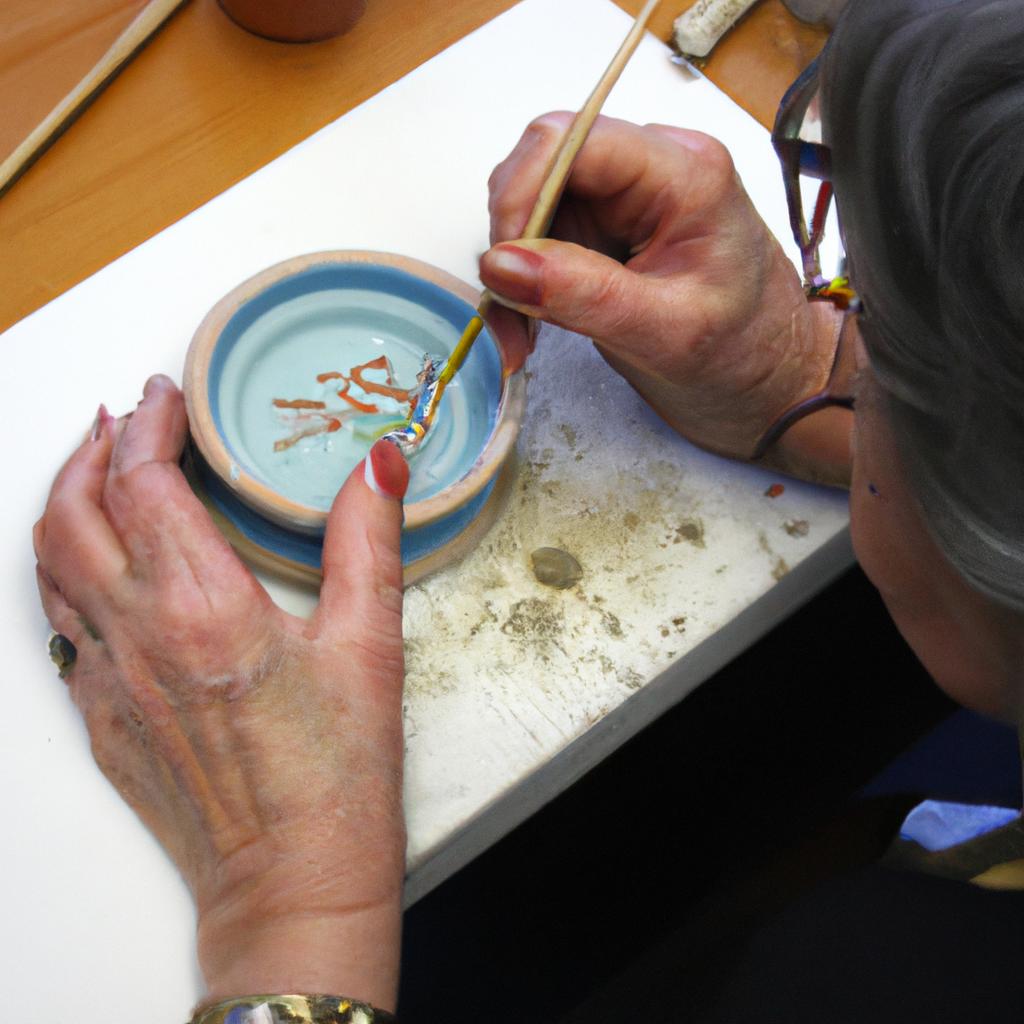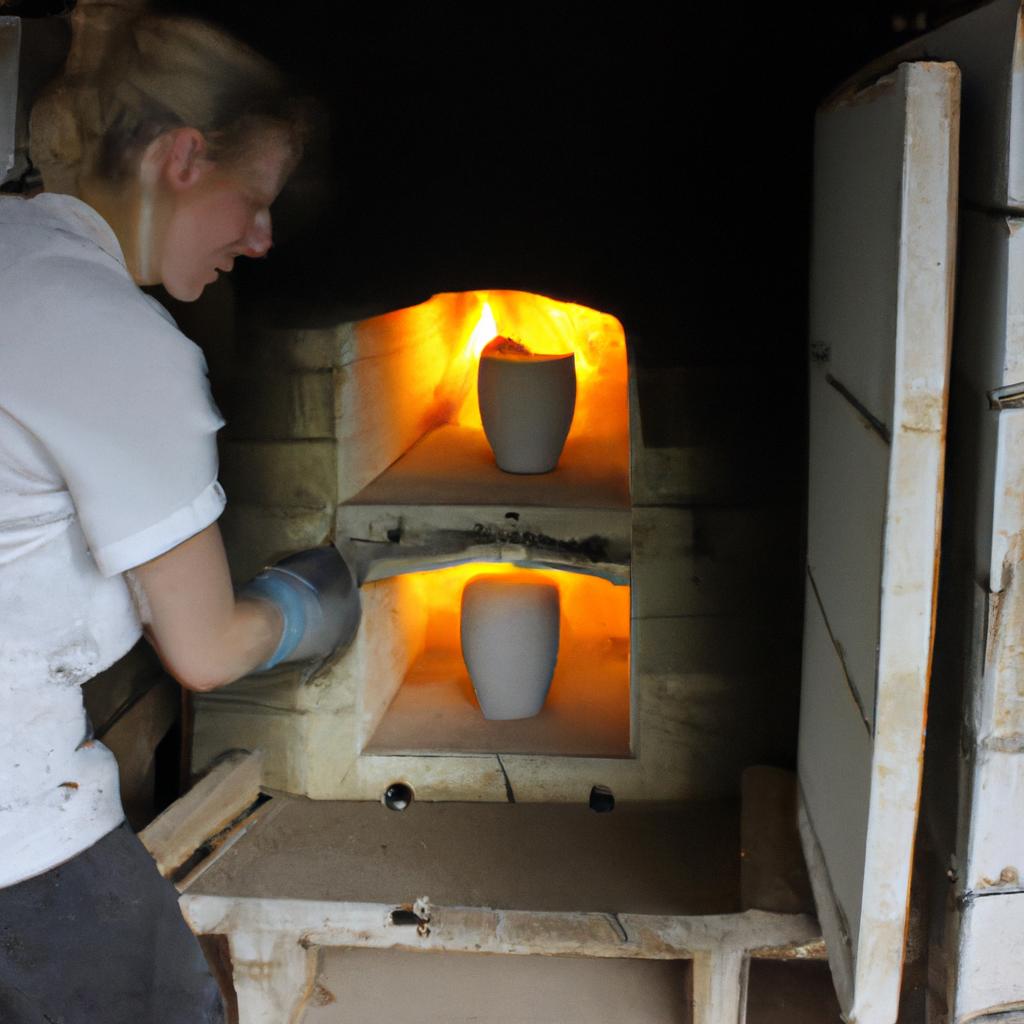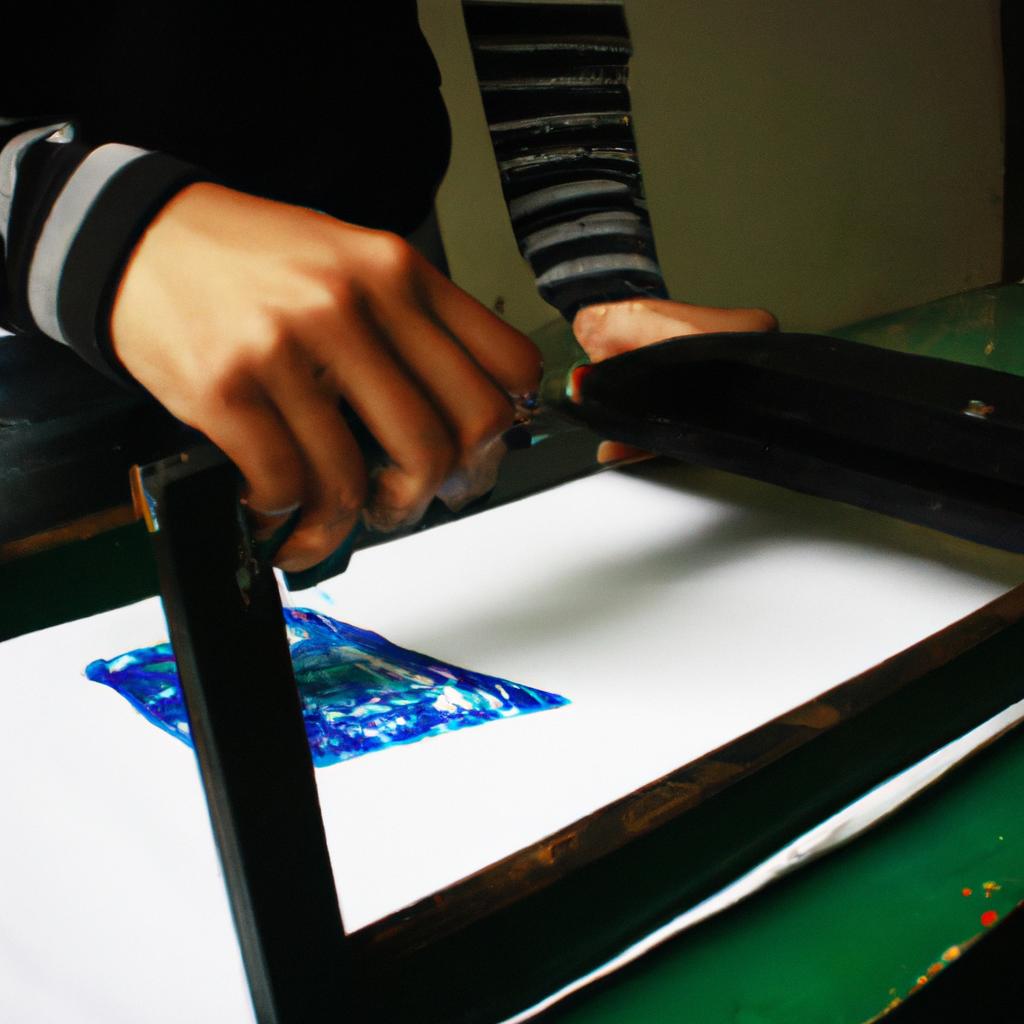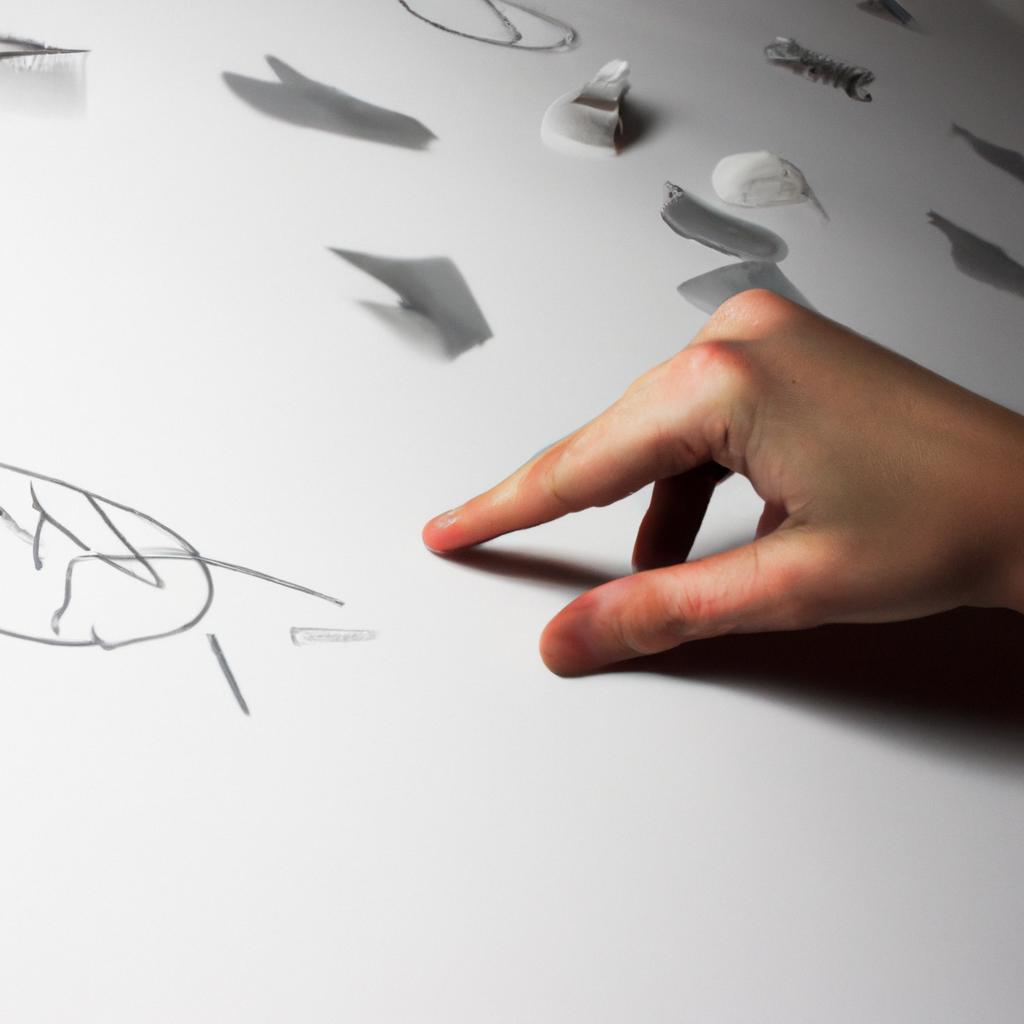Handbuilding: Visual Arts in Ceramics
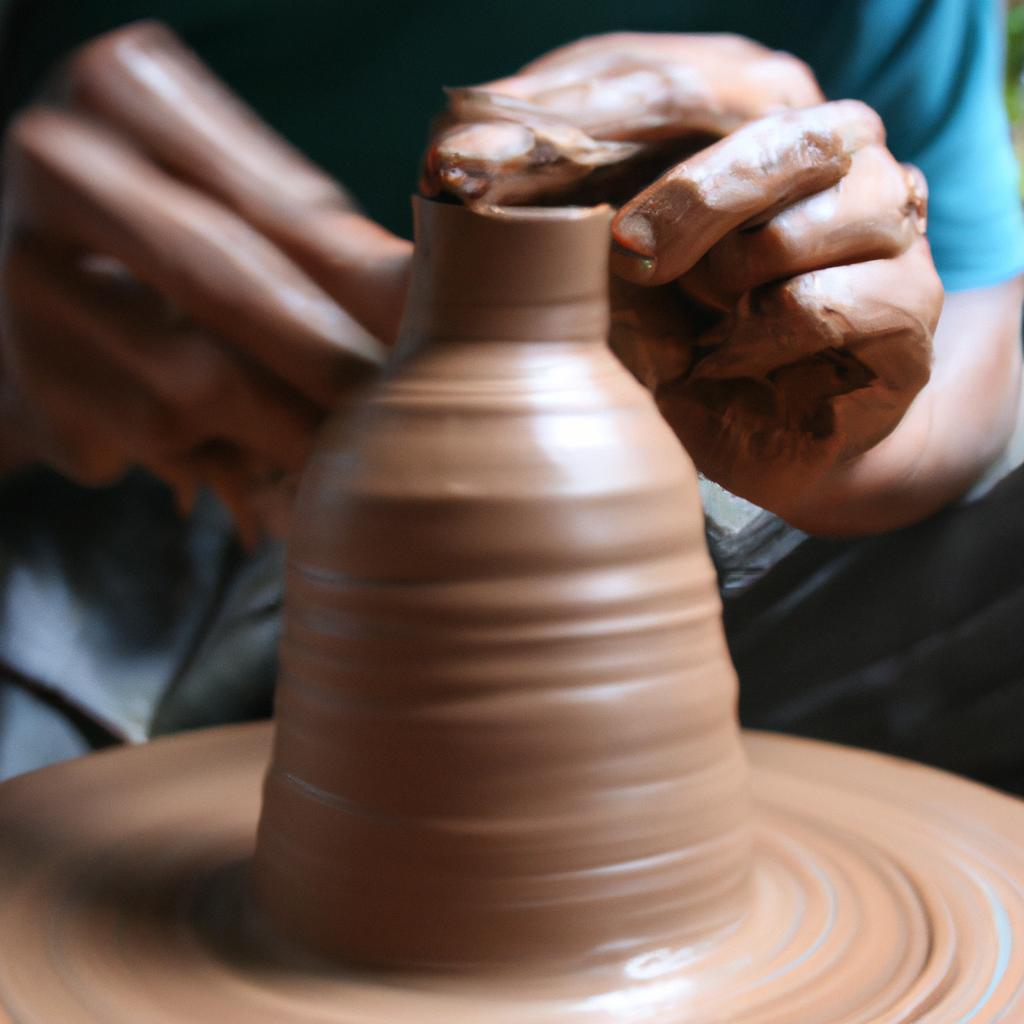
Handbuilding is a fundamental technique in the realm of visual arts within ceramics, offering artists an avenue for creative expression and exploration. This article sheds light on the intricate process of handbuilding, its historical significance, and its contemporary relevance. By delving into the various methods and techniques involved in this practice, readers will gain a deeper understanding of the artistic possibilities that can be achieved through handbuilding.
For instance, consider the hypothetical case study of an aspiring ceramic artist who embarks on their journey by exploring different handbuilding approaches. As they experiment with coiling, pinching, slab construction, and other handbuilding techniques, they discover the unique qualities inherent in each method: the organic forms created through coiling, the delicate precision achievable through pinching, and the versatility offered by slab construction. The artist realizes that handbuilding allows them to mold clay into shapes that transcend traditional vessel structures, enabling them to create sculptures or functional pieces infused with personal narratives and emotions.
Throughout history, handbuilt ceramics have played a pivotal role in numerous cultures worldwide. From ancient civilizations like China’s Tang Dynasty to indigenous communities across continents, these creations bear witness to human creativity and craftsmanship. In today’s modern context as well, handbuilding continues to captivate artists seeking alternative means of self-expression. With the rise of digital technology and mass production, handbuilding offers a counterbalance by emphasizing the tactile and intimate nature of creating with clay. Artists are drawn to this technique as it allows them to connect with their materials on a deeper level, fostering a sense of connection between artist and artwork.
Furthermore, handbuilding provides artists with endless possibilities for experimentation and innovation. By manipulating the clay through various techniques, they can push the boundaries of form, texture, and surface decoration. This opens up avenues for exploring new aesthetics, challenging traditional notions of ceramics, and pushing the medium into new artistic realms.
Handbuilding also encourages artists to engage in a more intuitive and responsive approach to their work. Unlike wheel-throwing where the process is often more structured and planned, handbuilding allows for spontaneity and improvisation. Artists can respond directly to the material’s characteristics, making adjustments as they go along. This fluidity in the creative process often leads to unexpected results that can be both exciting and inspiring.
Additionally, handbuilt ceramics offer unique opportunities for collaboration and community engagement. Workshops, classes, and artist residencies centered around handbuilding bring individuals together to learn from one another’s experiences and share their knowledge. The communal aspect of working with clay fosters a sense of belonging within the artistic community.
In conclusion, handbuilding remains an essential technique within ceramics that continues to captivate artists today. Its historical significance combined with its contemporary relevance showcases its enduring appeal. Whether through coiling, pinching, or slab construction, handbuilding provides artists with a versatile means of self-expression that transcends traditional vessel structures while fostering creativity, experimentation, collaboration, and community engagement.
History of Handbuilding in Pottery
Handbuilding, a technique used in pottery for centuries, has played a significant role in the development and evolution of ceramics. This section explores the historical context of handbuilding and its impact on the visual arts.
To better understand the significance of handbuilding, let us consider an example from ancient civilizations. In ancient Mesopotamia, skilled artisans crafted intricate clay vessels using various handbuilding techniques such as coiling and pinching. These vessels served both practical purposes and symbolic functions within their respective societies, demonstrating the cultural value placed on handmade pottery throughout history.
The practice of handbuilding has evolved over time, reflecting advancements in technology and changes in artistic styles. To evoke an emotional response from audiences, we can explore some aspects that make handbuilt pottery unique:
- Organic forms: Handbuilding allows artists to create free-flowing shapes inspired by nature’s curves and contours.
- Textural diversity: Through manipulating clay with hands or tools, artists achieve rich textures that engage viewers’ senses.
- Surface decoration: From engraved patterns to applied glazes, handbuilt pottery offers endless opportunities for creative expression.
- Imperfections as beauty: Unlike mass-produced ceramics, handbuilt pieces often possess minor irregularities that enhance their aesthetic appeal while celebrating the human touch.
| Technique | Tools | Effects |
|---|---|---|
| Coiling | Clay coils | Organic sculptural forms |
| Pinching | Fingers | Textured surfaces |
| Slab building | Rolling pin | Geometric designs |
Appreciating these characteristics invites individuals to connect emotionally with handbuilt ceramics as they inspire wonder through their uniqueness and authenticity.
In transitioning to exploring “Techniques and Tools for Handbuilding,” it is essential to delve into specific methods employed by contemporary ceramists without explicitly stating “step.”
Techniques and Tools for Handbuilding
Section H2: Techniques and Tools for Handbuilding
In the previous section, we explored the rich history of handbuilding in pottery. Now, we turn our attention to the techniques and tools that are essential for creating unique ceramic pieces through this method. To illustrate the application of these techniques, let’s consider an example of a skilled potter named Sarah.
Sarah begins her creative process by preparing her clay. She carefully wedges the clay to remove any air bubbles and ensure its even consistency. Once the clay is ready, she selects one of several handbuilding techniques available to her:
- Pinching: Using her fingers and thumb, Sarah gently pinches and shapes small amounts of clay into various forms such as bowls or cups.
- Coiling: Sarah rolls out long strands of clay like ropes before stacking them on top of each other in a circular motion, gradually building up the walls of her vessel.
- Slab-building: By rolling out flat sheets or slabs of clay with a rolling pin, Sarah can cut precise shapes which she then joins together using slip or scoring techniques.
- Press molding: Utilizing molds made from plaster casts or found objects, Sarah impresses patterns onto rolled-out slabs of clay to create texture and design elements.
To better understand these techniques and their applications, here is a table summarizing their characteristics:
| Technique | Description |
|---|---|
| Pinching | Creating forms by shaping small pinched amounts |
| Coiling | Building vessels by stacking rolled-out coils |
| Slab-building | Joining flat sheets to construct complex shapes |
| Press molding | Impressing textures onto slabs using molds |
These different methods allow artists like Sarah to bring their artistic vision to life while embracing the tactile qualities inherent in ceramics. Through careful manipulation of form and materiality, they can evoke emotions ranging from delicate gracefulness to bold strength.
Exploring Different Handbuilding Methods
Building upon the foundational knowledge of handbuilding techniques and tools, we now delve into the exciting realm of exploring different handbuilding methods. By examining various approaches to creating ceramic artwork, artists can expand their repertoire and discover new possibilities for self-expression. To illustrate this point, let’s consider a hypothetical example of an artist named Sarah who is eager to experiment with alternative handbuilding methods.
Paragraph 1:
Sarah decides to explore coil building as her next venture in handbuilding ceramics. This technique involves rolling out clay coils and then stacking or interweaving them to create shapes and forms. As she embarks on her journey, Sarah encounters a myriad of benefits associated with coil building:
- Enhances creativity: Coil building allows artists like Sarah to think outside the box and push boundaries by creating intricate, unconventional shapes.
- Provides versatility: With coil building, artists have the freedom to construct both small-scale pieces such as cups and larger sculptures without limitations imposed by molds.
- Invokes tactile sensations: The process of coiling clay offers a unique tactile experience that deepens the connection between artist and material.
- Encourages experimentation: Artists are encouraged to experiment with surface textures, adding another layer of visual interest to their creations.
To further understand the wide range of handbuilding methods available, it is essential to examine other popular techniques such as slab construction, pinch pots, and press molding. Each method possesses its own distinct characteristics and advantages that cater to different artistic visions. Referencing these diverse approaches provides artists with valuable insights into selecting appropriate techniques based on their desired outcomes.
Paragraph 2:
Aspiring ceramicists often find themselves captivated by slab construction—an approach involving flat sheets of clay shaped into three-dimensional objects. Compared to traditional wheel throwing, slab construction permits greater control over form while offering several key benefits:
| Advantages of Slab Construction |
|---|
| – Facilitates precise measurements |
| – Allows for complex geometric designs |
| – Enables the creation of large-scale pieces |
| – Provides ease in incorporating texture and surface decoration |
This technique is particularly suitable for artists seeking a structured, architectural aesthetic or those who wish to experiment with intricate patterns and textures.
Paragraph 3:
Lastly, pinch pots and press molding offer additional avenues for artistic exploration. Pinch pots involve shaping clay by pinching it between fingers, resulting in organic forms that reflect the artist’s touch. On the other hand, press molding employs pre-made molds to create consistent shapes efficiently. Both methods provide unique advantages:
-
Pinch Pots:
- Encourages intuitive and spontaneous creations
- Facilitates expressive sculptural qualities
- Allows for variations in wall thickness, adding visual interest
-
Press Molding:
- Streamlines production through faster replication
- Ensures consistency in shape and size
- Perfect for creating functional objects with uniformity
By exploring these different handbuilding techniques—coil building, slab construction, pinch pots, and press molding—artists like Sarah can expand their creative horizons and discover innovative ways to bring their ideas to life.
With a solid understanding of various handbuilding methods established, let us now explore the role of texture and surface design in ceramic artwork.
The Role of Texture and Surface Design
Building upon the various handbuilding methods explored in the previous section, this next segment delves into an equally crucial aspect of ceramic artistry—texture and surface design. Through intentional manipulation of clay surfaces, artists can elevate their creations to new levels of visual intrigue and sensory appeal. To illustrate the transformative power of texture and surface design, let us consider a hypothetical scenario:
Imagine a ceramic artist who specializes in creating functional pottery. By incorporating intricate textures onto the exterior of their mugs, they not only enhance the aesthetic quality but also elevate the tactile experience for users. The carefully carved ridges provide a unique grip that adds both functionality and visual interest to each piece.
To further demonstrate the significance of texture and surface design in ceramics, here are four key points to bear in mind:
- Texture enhances visual depth: Incorporating different textures on a ceramic surface creates varying degrees of light reflection, resulting in visually captivating pieces that engage viewers.
- Surface treatment affects glaze application: Diverse textural elements can influence how glazes adhere to clay surfaces during firing, leading to unpredictable yet exciting results.
- Tactile sensations evoke emotional responses: When people interact with textured ceramics through touch, it stimulates their senses and elicits emotions such as comfort or curiosity.
- Cultural symbolism through patterned designs: Utilizing specific patterns or motifs can imbue ceramic works with cultural references or symbolic meanings, fostering connections between art and heritage.
To fully grasp these concepts related to texture and surface design within ceramics, refer to the following table showcasing notable techniques commonly employed by artists:
| Technique | Description | Example Usage |
|---|---|---|
| Sgraffito | Scratching through one layer of slip or glaze to reveal contrasting colors beneath | Creating intricate line drawings on pottery |
| Stamping | Impressions made using pre-made stamps or custom-carved tools | Adding repetitive patterns to ceramic surfaces |
| Mishima | Inlaying slip or underglaze into incised lines, then scraping off the excess | Achieving delicate and detailed surface decoration |
| Sprigging | Attaching small, three-dimensional clay decorations onto a base form | Enhancing sculptural elements on pottery |
Incorporating these techniques not only adds visual interest but also evokes emotional responses from viewers. By thoughtfully selecting and utilizing various textural elements in ceramics, artists can create works that intrigue, captivate, and connect with their audience.
As we delve deeper into the realm of handbuilding techniques within ceramics, our focus now shifts towards exploring the creation of sculptural forms using clay.
Handbuilding Sculptural Forms
Section H2: The Role of Texture and Surface Design
Having explored the significance of texture and surface design in handbuilding ceramics, we now turn our attention to the creation of sculptural forms. This section will delve into the techniques used to shape clay into three-dimensional objects that evoke a sense of depth and movement.
To illustrate this process, let us consider the hypothetical example of an artist who aims to create a visually captivating sculpture depicting a soaring bird in flight. Through careful manipulation of clay, they are able to capture the graceful curves and intricate details that define this majestic creature. By employing various handbuilding techniques such as coiling, pinching, and slab construction, the artist brings their vision to life.
Sculptural Techniques:
-
Coiling: One method employed in sculpting ceramic forms is coiling. Clay coils are carefully stacked upon one another, gradually building up layers until the desired shape is achieved. This technique allows for flexibility and control over form while also providing opportunities for incorporating texture or pattern through carving or impressing.
-
Pinching: Another approach utilized by artists when creating sculptural pieces involves pinching clay between their fingers. This technique enables precise modeling, allowing for subtle variations in thickness and contouring with minimal tools required. Additionally, it offers a more direct connection between the artist’s touch and the final outcome.
-
Slab Construction: Sculptors may opt for slab construction as well—a method that involves rolling out even planes of clay which can then be cut into shapes and joined together using scoring and slipping techniques. Slabs offer versatility in terms of size and scale while lending themselves particularly well to creating angular or geometric forms.
- The joy experienced when witnessing a static material like clay transform into dynamic sculptures.
- The sense of accomplishment derived from translating abstract ideas into tangible artworks.
- Awe-inspiring moments when observing how light interacts with the intricate contours of sculptural forms.
- The emotional connection formed between the artist and the viewer as they engage with these visually compelling creations.
Table: Examples of Different Sculptural Techniques
| Technique | Description |
|---|---|
| Coiling | Building up clay coils to create three-dimensional structures, allowing for textured surfaces through carving or impressing. |
| Pinching | Manipulating clay by hand, capturing subtle variations in thickness and contouring without requiring extensive tools. |
| Slab Construction | Using rolled-out planes of clay that can be cut into shapes and joined together using scoring and slipping techniques. |
With a solid understanding of the various techniques employed to shape clay into captivating sculptural forms, we now move forward to explore another crucial aspect of ceramics—The Importance of Firing and Finishing. Through this process, artists bring their creations to completion, enhancing both durability and aesthetic appeal.
The Importance of Firing and Finishing
Building upon the exploration of handbuilding sculptural forms, this section delves into another crucial aspect of ceramics – the importance of firing and finishing. Understanding these processes is essential in bringing clay works to their full potential.
Firing plays a pivotal role in transforming raw clay into durable ceramic objects. It involves subjecting the formed pieces to high temperatures in kilns, which causes physical and chemical changes within the clay matrix. To illustrate its significance, let’s consider an example: imagine a delicate porcelain vase meticulously crafted with intricate patterns. Without proper firing, this piece would remain fragile and vulnerable to breakage. Through controlled heating and cooling cycles during firing, the clay undergoes vitrification, becoming less porous and gaining strength. This process not only enhances structural integrity but also sets the stage for further artistic expression through glazing and surface treatments.
The journey from raw clay to finished ceramic art extends beyond mere firing; it encompasses various techniques employed during finishing as well. Finishing refers to refining surfaces, adding decorative elements, or applying protective coatings to completed sculptures or vessels. Here are some key aspects involved:
- Glazes: These colorful glass-like substances are applied on fired ceramics to add visual appeal while providing protection against moisture.
- Surface textures: Artists utilize tools or manual techniques such as carving, incising, or impressing patterns onto the clay body before or after firing.
- Engobes and underglazes: These colored slips are used for creating specific designs by layering different colors over one another.
- Decoration: From painting intricate scenes using fine brushes to stamping unique motifs onto wet clay, artists can employ diverse methods for ornamentation.
To further emphasize the significance of these concepts, below is a table showcasing how different finishes evoke distinct emotional responses in viewers:
| Finish | Emotional Response |
|---|---|
| Glossy glaze | Elegance |
| Textured surface | Intrigue |
| Vibrant colors | Joy |
| Subtle markings | Serenity |
In summary, firing and finishing are integral components of the handbuilding process in ceramics. Firing transforms malleable clay into durable ceramic objects, while finishing allows for artistic expression and evokes emotional responses in viewers. By understanding these techniques and their impact on the final outcome, artists can elevate their creations to new levels of craftsmanship and aesthetic appeal.
Note: The table above showcases how different finishes evoke distinct emotional responses in viewers:
| Finish | Emotional Response |
|---|---|
| Glossy glaze | Elegance |
| Textured surface | Intrigue |
| Vibrant colors | Joy |
| Subtle markings | Serenity |


